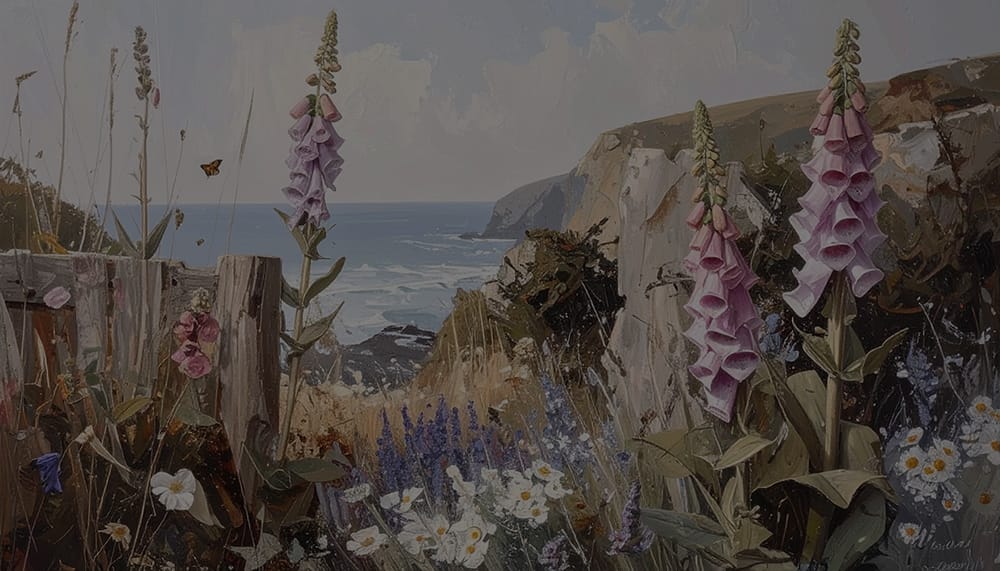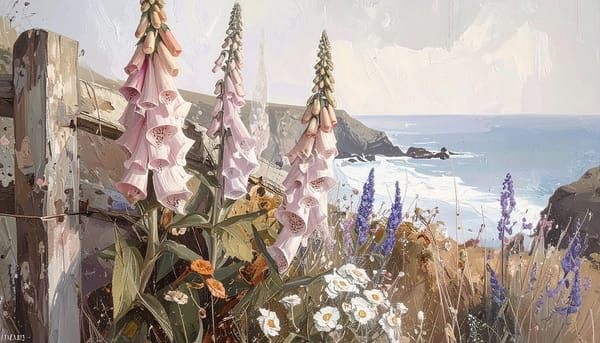In Cornwall, native plants are more than just a charming addition to the garden — they’re lifelines for pollinators, keepers of local folklore, and quiet heroes in the face of shifting coastal climates. Their resilience is deeply rooted in the Cornish landscape, thriving in salty winds, variable weather, and time-worn soils.
Foxgloves, for example, have long been beloved in Cornish folklore, entwined with stories of fairies and protective charms. But beyond their mythic associations, they serve a vital role in supporting bumblebees and moths. Their deep tubular flowers are perfectly shaped for long-tongued bees, offering nectar at a time of year when it’s most needed.
Honeysuckle, another native treasure, winds through hedgerows and garden fences, drawing bees, butterflies, and birds. Its heady scent and late-summer blooms make it a beacon for pollinators — and a symbol of endurance and sweetness in Cornish tales.
Primroses are among the first signs of spring, carpeting woodlands and hedgerows with soft yellow. Historically linked with protective charms and May Day celebrations, they’re a crucial early nectar source for emerging bees. Their resilience in shaded, damp corners of the garden helps knit together wild planting schemes with gentle beauty.
And lavender — though often associated with Mediterranean gardens — has become a near-native presence in Cornwall’s coastal gardens, loved by bees and resilient in the face of drought and wind. Its long flowering season and heady scent make it an anchor plant for pollinator-friendly spaces.
When gardeners weave native plants into their designs, they’re not only preserving Cornwall’s natural beauty but actively supporting biodiversity. These plants offer vital food and habitat for pollinators whose survival is increasingly at risk due to habitat loss and climate change. In return, pollinators help maintain healthy garden ecosystems, supporting fruiting, flowering, and resilience.
Moreover, native plants are naturally adapted to local conditions — making them better equipped to thrive in Cornwall’s shifting climate. Whether it’s the salt-laden winds of the coast or the unpredictable rain patterns of the inland valleys, these plants have evolved to withstand the elements with minimal intervention. This means less watering, fewer chemicals, and a more harmonious relationship between gardener and land.
Embracing native plants also means embracing the layered stories of place — weaving together the ecological, historical, and cultural threads that make Cornish gardens so unique. As the climate continues to shift, planting with native species isn’t just a nod to tradition — it’s a commitment to a resilient, thriving future.

Sign up for The Cornish Garden
A modern gardening blog rooted in Cornwall, sharing seasonal tips, plant profiles, patch plans, natural dyeing, and stories from wild and edible gardens.
No spam. Unsubscribe anytime.









